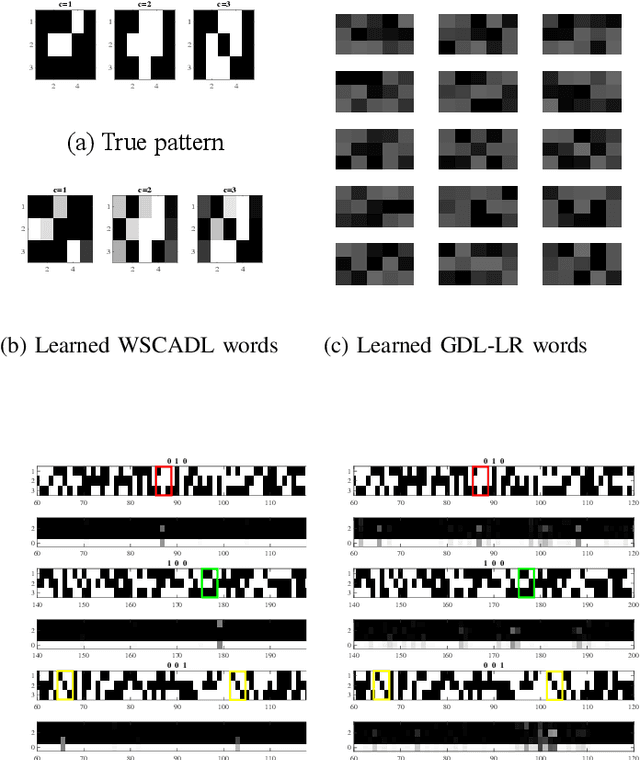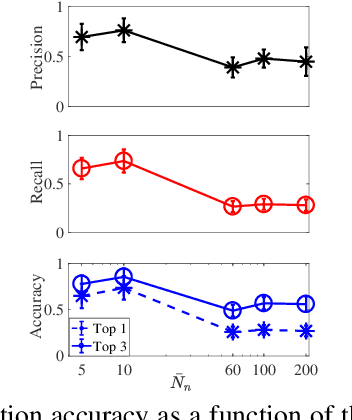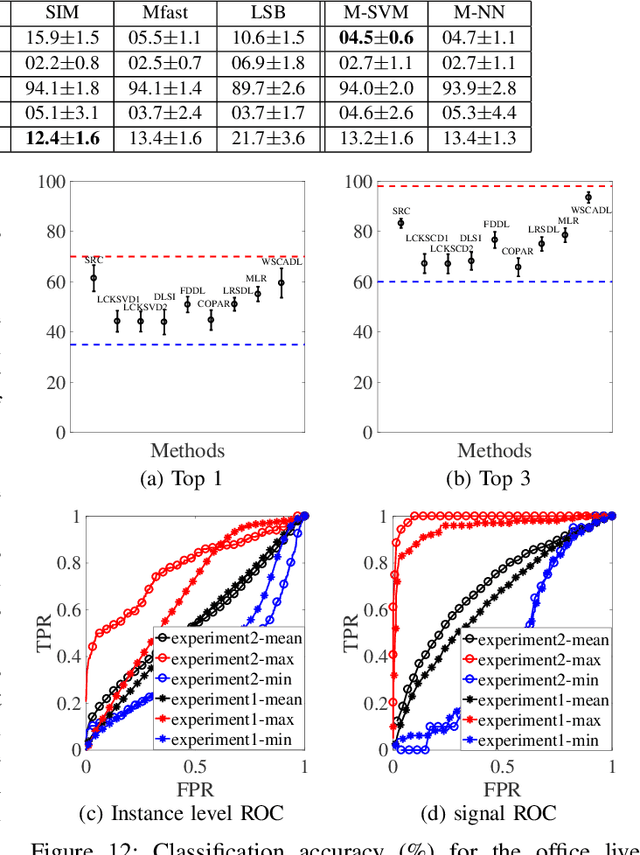Jinsub Kim
Identifiable Solutions to Foreground Signature Extraction from Hyperspectral Images in an Intimate Mixing Scenario
Mar 20, 2023Abstract:The problem of foreground material signature extraction in an intimate (nonlinear) mixing setting is considered. It is possible for a foreground material signature to appear in combination with multiple background material signatures. We explore a framework for foreground material signature extraction based on a patch model that accounts for such background variation. We identify data conditions under which a foreground material signature can be extracted up to scaling and elementwise-inverse variations. We present algorithms based on volume minimization and endpoint member identification to recover foreground material signatures under these conditions. Numerical experiments on real and synthetic data illustrate the efficacy of the proposed algorithms.
Weakly-supervised Dictionary Learning
Feb 05, 2018



Abstract:We present a probabilistic modeling and inference framework for discriminative analysis dictionary learning under a weak supervision setting. Dictionary learning approaches have been widely used for tasks such as low-level signal denoising and restoration as well as high-level classification tasks, which can be applied to audio and image analysis. Synthesis dictionary learning aims at jointly learning a dictionary and corresponding sparse coefficients to provide accurate data representation. This approach is useful for denoising and signal restoration, but may lead to sub-optimal classification performance. By contrast, analysis dictionary learning provides a transform that maps data to a sparse discriminative representation suitable for classification. We consider the problem of analysis dictionary learning for time-series data under a weak supervision setting in which signals are assigned with a global label instead of an instantaneous label signal. We propose a discriminative probabilistic model that incorporates both label information and sparsity constraints on the underlying latent instantaneous label signal using cardinality control. We present the expectation maximization (EM) procedure for maximum likelihood estimation (MLE) of the proposed model. To facilitate a computationally efficient E-step, we propose both a chain and a novel tree graph reformulation of the graphical model. The performance of the proposed model is demonstrated on both synthetic and real-world data.
A Learning Scheme for Microgrid Islanding and Reconnection
Apr 17, 2017



Abstract:This paper introduces a potential learning scheme that can dynamically predict the stability of the reconnection of sub-networks to a main grid. As the future electrical power systems tend towards smarter and greener technology, the deployment of self sufficient networks, or microgrids, becomes more likely. Microgrids may operate on their own or synchronized with the main grid, thus control methods need to take into account islanding and reconnecting of said networks. The ability to optimally and safely reconnect a portion of the grid is not well understood and, as of now, limited to raw synchronization between interconnection points. A support vector machine (SVM) leveraging real-time data from phasor measurement units (PMUs) is proposed to predict in real time whether the reconnection of a sub-network to the main grid would lead to stability or instability. A dynamics simulator fed with pre-acquired system parameters is used to create training data for the SVM in various operating states. The classifier was tested on a variety of cases and operating points to ensure diversity. Accuracies of approximately 85% were observed throughout most conditions when making dynamic predictions of a given network.
 Add to Chrome
Add to Chrome Add to Firefox
Add to Firefox Add to Edge
Add to Edge